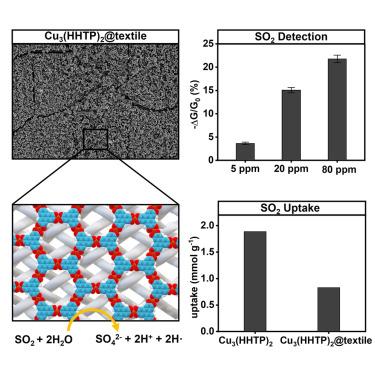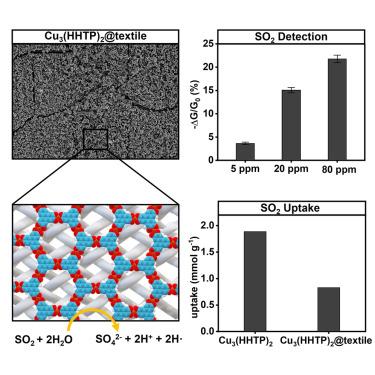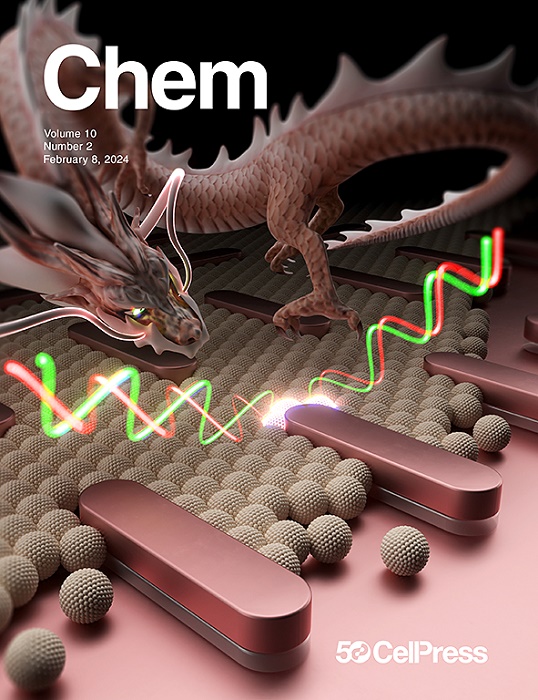可扩展模板制造的cu基MOF在纺织品上的同时传感,过滤和脱毒的二氧化硫
IF 19.6
1区 化学
Q1 CHEMISTRY, MULTIDISCIPLINARY
引用次数: 0
摘要
本文描述了智能电子纺织品(e-纺织品)的可扩展制造,能够同时感应、过滤和解毒二氧化硫(SO2)。模板法将预沉积的铜金属转化为氢氧化铜,然后转化为铜基六羟基三苯基金属有机骨架(MOF) (Cu3(HHTP)2),从而获得大面积(10 × 10 cm2)导电涂层(片电阻= 0.1-0.3 MΩ)。由此产生的电子纺织品实现了传感(理论检测限[LOD]为0.43 ppm)、过滤(在1 bar和298 K下,MOF粉末和MOF/纺织品分别吸附1.9和0.83 mmol g−1)和解毒(SO2气体氧化还原转化为固体硫酸盐),这是由于选择性材料-分析物相互作用。这种可扩展的生成电子纺织品的方法是制造具有多功能性能特征的智能膜材料的一种很有前途的方法。本文章由计算机程序翻译,如有差异,请以英文原文为准。


Scalable templated fabrication of a Cu-based MOF on textiles for simultaneous sensing, filtration, and detoxification of SO2
This paper describes the scalable fabrication of smart electronic textiles (e-textiles) capable of simultaneous sensing, filtration, and detoxification of sulfur dioxide (SO2). The templated method converts pre-deposited copper metal into copper hydroxide, followed by conversion into a copper-based hexahydroxytriphenylene metal-organic framework (MOF) (Cu3(HHTP)2), to afford a large-area (10 × 10 cm2) conductive coating (sheet resistance = 0.1–0.3 MΩ). The resulting e-textiles achieve sensing (theoretical limit of detection [LOD] of 0.43 ppm), filtration (adsorption uptake of 1.9 and 0.83 mmol g−1 for MOF powder and MOF/textile, respectively, at 1 bar and 298 K), and detoxification (redox conversion of SO2 gas into solid sulfate) due to the selective material-analyte interactions. This scalable method for generating e-textiles is a promising approach for the fabrication of smart membrane materials with multifunctional performance characteristics.
求助全文
通过发布文献求助,成功后即可免费获取论文全文。
去求助
来源期刊

Chem
Environmental Science-Environmental Chemistry
CiteScore
32.40
自引率
1.30%
发文量
281
期刊介绍:
Chem, affiliated with Cell as its sister journal, serves as a platform for groundbreaking research and illustrates how fundamental inquiries in chemistry and its related fields can contribute to addressing future global challenges. It was established in 2016, and is currently edited by Robert Eagling.
 求助内容:
求助内容: 应助结果提醒方式:
应助结果提醒方式:


